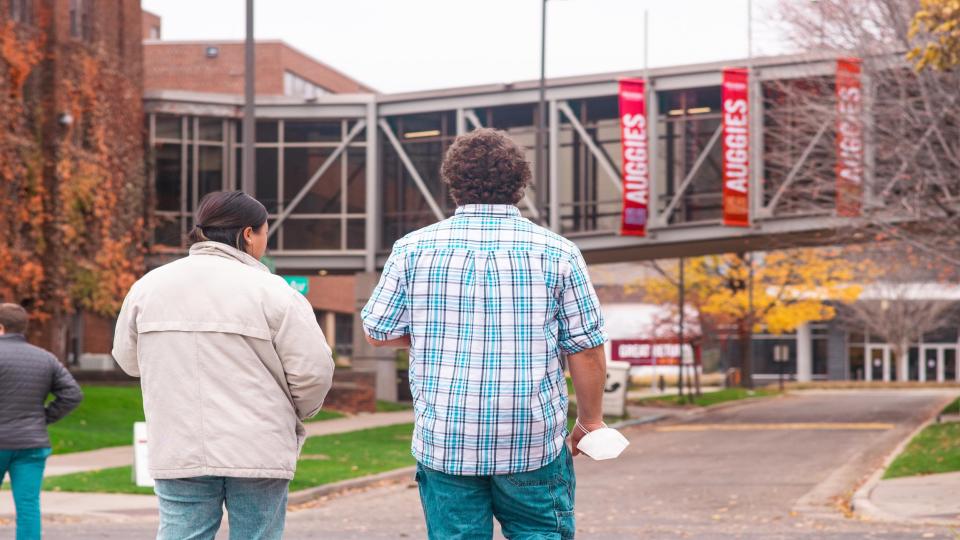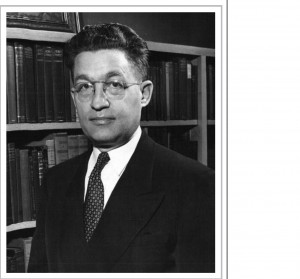There is a “history” to the Christensen Center of Vocation that includes many names and dates, various iterations of grants and the particular initiatives those grants helped make possible. There is an important legacy, that of Bernhard H. Christensen, Augsburg’s 8th president, whose own story and example of leadership has seeded some of the imagination for what and how CCV has discerned its evolving call. That history is important and sheds light on our context. But our story is really something more than our history. And in some ways our story is just a story – one of many – seeking to get aligned with a larger story about God’s unfolding creative work towards the healing and repairing of the world.
Our story is about the day to day work of being a neighbor. Our story is about the simple but big work of relationships as we try to cultivate ways to lean into our generous connection to each other.
The characters in our story include students, faculty, and staff from our Augsburg community. They include congregational leaders and pastors in our RIH partnerships. They include high school students gathering for a week on campus through AYTI and young adults invited into leadership roles on campus and all over the country. The story takes place in neighborhoods – like Longfellow, Brooklyn Park, Cedar-Riverside, Columbia Heights, Powderhorn and Macalester-Groveland. The story includes neighbors in all these places – humans, watersheds, pollinators, schools, local businesses.
 The arc of this story is particular to each of these places and the characters that are a part of them. But the throughline is one of curiosity. What is God up to here? Who is our neighbor and how can we listen to them? What are we being invited to learn? How might we be called to show up better? Or get out of the way?
The arc of this story is particular to each of these places and the characters that are a part of them. But the throughline is one of curiosity. What is God up to here? Who is our neighbor and how can we listen to them? What are we being invited to learn? How might we be called to show up better? Or get out of the way?
And like any good story, curiosity doesn’t just play a role for its own sake, but it functions to further the plot. To help us, in our different places and with our neighbors, to participate in transformation. The kind that softens hard hearts, opens imaginations for different and better ways to be together, inspires collective action towards collective good, develops leaders to face the challenges of a changing world and brings us a little closer to God’s good intentions for God’s creation here and now and in our places.
In a way, the orientation of CCV towards place-based vocational discernment in the public square for the common good, is really about how we help others tell their story of what this looks like and feels like in their neighborhood, in their community, in their congregation or in their call. Whether that is the story of an Augsburg student or employee, a young person participating in our AYTI institute, a congregation in our RIH learning community, or a ministry or community leader, CCV is about accompanying folks living into the story they are called to – in their places, contributing to the healing and repairing of the world and the flourishing of our neighbors.
Who was Bernhard M. Christensen?
 Bernhard M. Christensen (1901-84) was the eighth president of Augsburg University, serving from 1938 to 1962. He was born in Wisconsin, the son of Danish immigrant parents. He graduated from Augsburg University in 1922 and Augsburg Seminary in 1925. Following his seminary work (though he was never ordained), Christensen did further study at Princeton Seminary, the University of Berlin and the University of Goettingen in Germany. In 1935 he married Gracia Gunderson of Brooklyn, New York. They had five children and she would eventually teach English at Augsburg.
Bernhard M. Christensen (1901-84) was the eighth president of Augsburg University, serving from 1938 to 1962. He was born in Wisconsin, the son of Danish immigrant parents. He graduated from Augsburg University in 1922 and Augsburg Seminary in 1925. Following his seminary work (though he was never ordained), Christensen did further study at Princeton Seminary, the University of Berlin and the University of Goettingen in Germany. In 1935 he married Gracia Gunderson of Brooklyn, New York. They had five children and she would eventually teach English at Augsburg.
Christensen was a gifted leader who led Augsburg through a time of significant change. He was also a theologian who sought to avoid both a reactive fundamentalism and a theological liberalism that was cut loose from the tradition. Christensen was ecumenical in outlook while being deeply rooted in his own heritage. Above all, he hoped “…the church of Luther—glorying in ‘the freedom of the Christian man’ and made strong through faith in a living Christ—may yet speak the deciding word.”[1]
The Christensen Center for Vocation has found guidance in discerning its work through the five lessons attributed to Bernhard H. Christensen.
- Christian faith liberates minds and lives
- Diversity strengthens vital communities
- Inter-faith friendships enrich learning
- The love of Christ draws us to God
- We are called to service in the world
[1] As quoted in James Hamre, “Bernhard M. Christensen (1901-84),” Lutheran Quarterly, 19 (Winter 2005) 424-25.
*For more information about Bernhard M. Christensen, please see the following links:
“Devoutly Would He Teach: The Legacy of Bernhard M. Christensen,” Gracia Grindal, ’65, professor of rhetoric at Luther Seminary, Bernhard M. Christensen Symposium keynote address on Oct. 2, 2010
Reflections on the 5 Lessons of Bernhard M. Christensen from the spring 2010 issue of Till & Keep journal.

